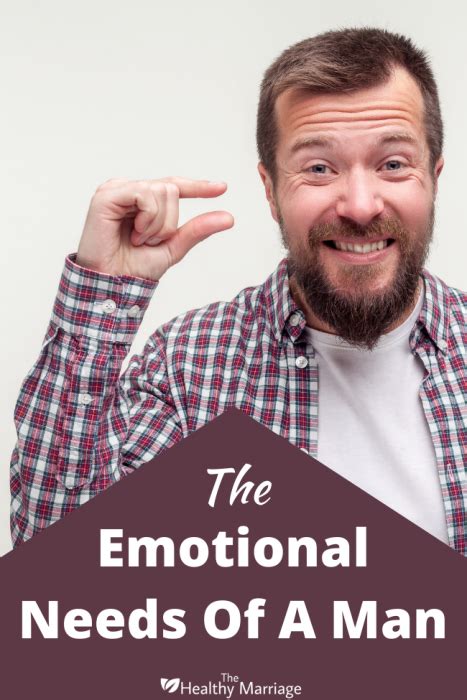The Complex Landscape of Men’s Emotional Expression
Understanding how men navigate and express their emotional needs within their closest relationships is a nuanced journey, often shaped by a tapestry of societal expectations, traditional masculine norms, and individual experiences. While the stereotype of the stoic, emotionally repressed man persists, reality is far more complex. Men do have emotional needs – for connection, understanding, support, and intimacy – but the pathways they use to communicate these can differ significantly from women, and indeed, from man to man.

The Shadow of Traditional Masculinity
Historically, traditional masculine ideals have often discouraged open emotional expression in men. Phrases like “boys don’t cry” or “man up” ingrained a belief that showing vulnerability is a sign of weakness. This societal conditioning can lead men to internalize their feelings, perceiving emotional expression as a risk rather than a necessity for healthy relationships. Consequently, many men learn to either suppress their emotions or express them indirectly.
This suppression doesn’t eliminate emotional needs; it merely redirects their expression. Men might channel their feelings into problem-solving, physical activity, humor, or even anger, which can sometimes be a secondary emotion masking deeper pain or frustration. The challenge for many lies in identifying and articulating these primary emotions.
Navigating Needs: Indirect vs. Direct Communication
Indirect Pathways to Connection
For many men, emotional needs are often conveyed through actions rather than words. A man might show love and care by fixing something around the house, providing financial security, engaging in shared activities (like sports or hobbies), or offering practical solutions to problems. These actions are often genuine expressions of their commitment and desire to support their loved ones, even if the underlying emotional need for connection isn’t explicitly stated.
- Shared Activities: Bonding over a shared hobby, a game, or a project can be a powerful way for men to feel connected and understood, often without extensive verbal communication.
- Practical Support: Offering help, solving problems, or taking on responsibilities can be a primary love language, fulfilling both the giver’s need to contribute and the receiver’s need for support.
- Humor and Lightheartedness: Sometimes, jokes or a light-hearted approach can be a way to test the waters, gauge emotional safety, or even deflect from deeper feelings while still seeking connection.

The Gradual Embrace of Directness
Direct verbal expression of emotional needs often requires a significant level of trust and a perceived safe space within a relationship. Men are more likely to express vulnerability directly when they feel genuinely heard, understood, and accepted without judgment. This is particularly true in romantic partnerships and sometimes in very close male friendships where long-standing trust has been established.
When men do express themselves directly, it might be in short bursts, or focused on specific, tangible issues rather than a broad outpouring of feelings. They might seek validation, reassurance, or simply an acknowledgment of their experience. Learning to articulate “I feel sad” or “I need your support” can be a lifelong process for some, slowly cultivated through positive relational experiences.

The Role of Specific Relationships
In Romantic Partnerships
Romantic relationships often serve as the primary arena for men to explore and express their emotional needs. Partners who create an environment of unconditional acceptance, empathy, and active listening can significantly help men open up. Conversely, perceived criticism or a lack of understanding can reinforce the tendency to withdraw.
In Male Friendships
While historically less focused on verbal emotional sharing, male friendships are evolving. Many men are now seeking deeper emotional connections with their male friends, moving beyond purely activity-based bonding. Conversations about life challenges, fears, and vulnerabilities are becoming more common, facilitated by a growing awareness of mental health and the benefits of shared emotional burdens.

Fostering Healthier Emotional Expression
For men and their partners, fostering healthier emotional expression involves several key steps:
- Cultivate a Safe Space: Ensure the relationship is a judgment-free zone where vulnerability is met with empathy, not criticism or attempts to “fix.”
- Practice Active Listening: Truly listen to understand, rather than to respond. Validate feelings, even if you don’t fully understand them.
- Encourage “Feeling” Language: Help men build their emotional vocabulary by gently prompting them to describe their feelings rather than just their thoughts or actions.
- Acknowledge Indirect Cues: Recognize that actions, shared activities, or even subtle changes in behavior might be attempts to communicate deeper needs.
- Lead by Example: Partners can model healthy emotional expression by openly and respectfully sharing their own feelings.

Conclusion
The journey of men navigating and expressing emotional needs is deeply personal yet broadly influenced by cultural narratives. While traditional masculinity has historically presented barriers, there’s a growing recognition of the importance of emotional literacy and vulnerability for well-being and stronger relationships. By cultivating understanding, empathy, and safe spaces, both individuals and society can encourage men to express their emotional needs more authentically, leading to deeper connections and more fulfilling lives.



